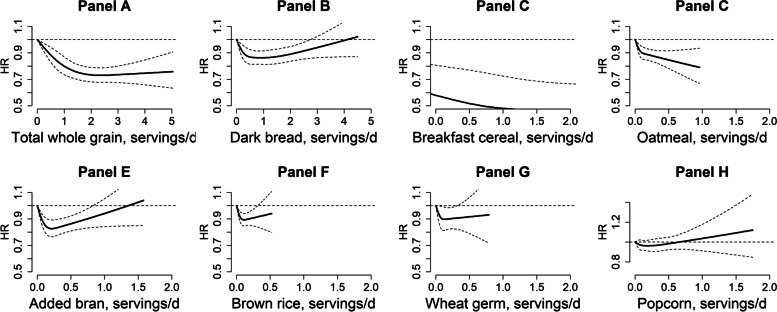Fig. 1.
Dose-response relationship for total whole grain and individual whole grain foods in relation to coronary heart disease risk. Data from three cohorts were combined and truncated at 99.5th percentile. Dashed lines were 95% confidence intervals. Models were age- (months) and calendar-time stratified and adjusted for ethnicity (white, African American, Asian, others), updated body mass index (calculated as weight in kilograms divided by height in meters squared) (<21.0, 21.0–22.9, 23.0–24.9, 25.0–26.9, 27.0–29.9, 30.0–32.9, 33.0–34.9, or ≥35.0 kg/m2), smoking status (never smoked, past smoker, currently smoke 1–14 cigarettes per day, 15–24 cigarettes per day, or ≥25 cigarettes per day), alcohol intake (0, 0.1–4.9, 5.0–9.9, 10.0–14.9, 15.0–29.9, and ≥30.0 g/day), baseline diabetes (yes, no), multivitamin use (yes, no), physical activity (quintiles), modified alternative healthy eating index (quintiles, whole grain component was excluded), total energy (quintiles), and family history of MI (yes, no). P value for non-linearity <0.01 for A–F, 0.08 for G, and 0.30 for H

